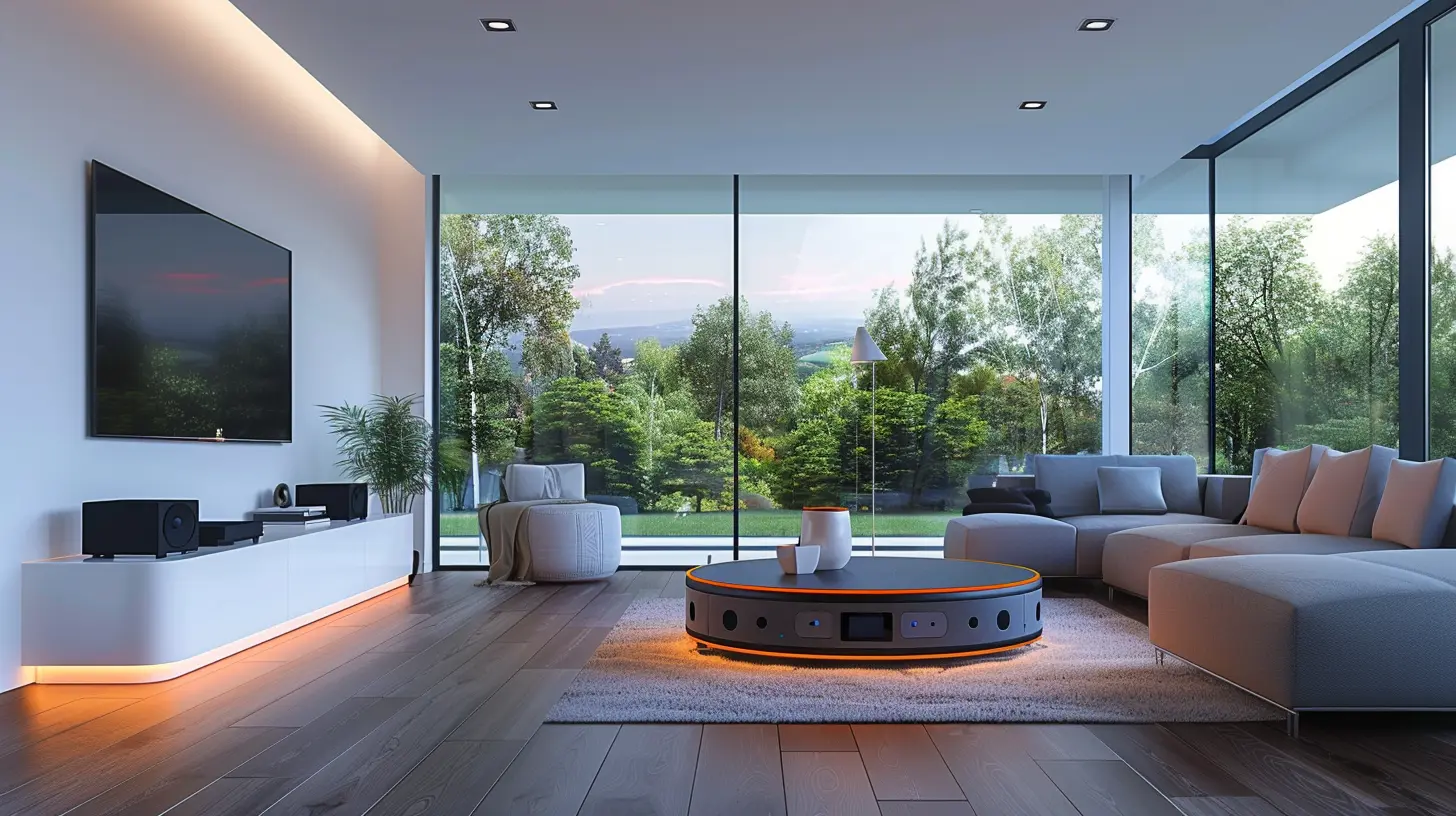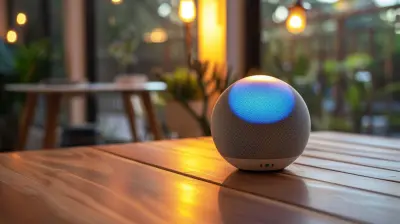Revolutionizing Smart Homes with IoT Integration
20 November 2025
Welcome to the future — a world where your coffee brews itself before your alarm even goes off, your fridge tells you what to buy, and your home knows when you're arriving before you even hit the driveway. Sounds like something out of a sci-fi movie, doesn’t it? Well, thanks to the Internet of Things (IoT), this is becoming reality faster than you might expect.
IoT integration is not just tweaking gadgets to talk to each other—it’s completely reshaping how we live, especially inside our homes. In this article, we’ll dig deep into how IoT is revolutionizing smart homes, why it matters, how it works, and what to expect as technology continues to evolve.
What is IoT, and Why Does It Matter in Smart Homes?
Let’s break it down. IoT, or the Internet of Things, is a massive network of connected devices that communicate and share data with each other through the internet. Imagine every appliance, every light switch, every sensor in your house being able to talk with each other—and even make decisions on your behalf. Kind of like giving your home a brain.Now, smart homes are homes that incorporate smart devices — think smart lights, smart thermostats, voice assistants, or security cameras. When you throw IoT into the mix, these devices become more than individual tools. They collaborate, automate, and adapt based on your behaviors and choices.
Why Should You Care?
Because it's not just about being cool (although that part’s pretty fun too). IoT integration in smart homes brings:- Convenience: Automate routines like locking doors at night or adjusting lights based on time of day.
- Energy Efficiency: Smart thermostats learn your schedule and optimize heating and cooling.
- Security: Real-time monitoring, alerts, and automation mean better protection.
- Cost Savings: Smart energy management systems help slash utility bills.

The Building Blocks of a Smart Home with IoT
Let’s peek under the hood. What makes a smart home “smart” with IoT?1. Smart Devices and Sensors
This is where the magic begins. These include:- Smart thermostats (like Nest or Ecobee)
- Smart lights (Philips Hue or Lifx)
- Security cameras and doorbells (Ring, Arlo)
- Smart locks
- Motion sensors
- Plugs and appliances
Each of these has sensors that collect data—temperature, motion, sound, light levels, and more.
2. Connectivity
Devices need a way to communicate. This usually involves:- Wi-Fi
- Bluetooth
- Zigbee or Z-Wave (less common, but great for smart home networks)
Without strong connectivity, your smart home is like a team of athletes who can’t talk to each other. No teamwork, no wins.
3. IoT Platforms and Hubs
This is the glue that holds everything together. Platforms like Apple HomeKit, Google Home, or Amazon Alexa let you control all your devices from one place — your smartphone or through voice commands.Think of your hub as the conductor of your smart home orchestra. It ensures every instrument (device) plays in harmony.
Real-World Use Cases of IoT in Smart Homes
If you’re wondering how these components play out in real life, let's walk through a few real-world examples that show how IoT integration is revolutionizing everyday living.1. Smart Energy Management
Remember the days of leaving your AC on all day accidentally? With IoT, your thermostat knows when you’re home, when you’re away, and adjusts accordingly. Smart plugs turn off devices not in use. Solar panels, battery storage, and smart grids now operate together, optimizing how energy is produced, stored, and used.Bonus: you save money and help save the planet.
2. Automated Home Security
Security systems are now smarter than traditional ones. Your doorbell camera can recognize faces, notify you when there’s someone unfamiliar, and even talk to visitors. Smart locks grant access to trusted friends or service providers when you’re away. And if a window’s left open, you’ll get an alert on your phone.3. Health and Wellness Monitoring
Smart homes are extending into personal wellness. IoT devices can monitor air quality, detect leaks, measure humidity, and even track your sleep. There are even smart toilets (yep, you read that right) that can analyze health data discreetly.4. Voice-Controlled Convenience
Imagine lying in bed and saying, “Alexa, turn off the lights” instead of getting up. That’s not just laziness — it’s convenience. Voice assistants let you control your devices hands-free. And with routines, you can bundle actions. Say “Goodnight,” and your assistant dims the lights, locks the doors, and adjusts the thermostat. Sweet dreams guaranteed.
Challenges of IoT Integration (Because Nothing's Perfect)
While the benefits are huge, let’s not sweep the challenges under the rug. If you’re considering diving into IoT integration for your home, here’s what to watch out for:1. Privacy Concerns
With more devices collecting data comes the risk of data being misused. Who sees your data? How is it stored? Is it secure?It’s vital to choose reputable devices with reliable encryption and privacy protocols.
2. Security Threats
Smart homes, like any connected system, can be hacked. A weak password or an unsecured device could let cybercriminals in. That’s why regular software updates and strong, unique passwords are your new best friends.3. Compatibility Issues
Not all smart devices play nice with each other. It’s like putting together IKEA furniture from different collections—some parts just won’t fit.That’s why sticking to a single ecosystem (like Apple, Amazon, or Google) often leads to smoother integration.
Future Trends: Where Smart Homes Are Headed with IoT
IoT in smart homes is still just revving its engines. Here’s a glimpse of what’s coming down the road.1. AI-Powered Automation
Your smart home is going to get even smarter. AI will allow homes to learn your habits in more detail, understand natural speech better, and predict your needs before you realize them.Imagine walking in after a long day, and your home knows to dim the lights, play your chill playlist, and pour you a drink (okay, maybe not that last one—yet).
2. Edge Computing
Instead of sending all data to the cloud, edge computing processes data at the device level. This means faster response times and better privacy because less information needs to leave your home.3. Increased Interoperability
Thanks to initiatives like Matter (a new connectivity standard), the future promises a more unified smart home experience. Finally, devices from different brands may actually get along!4. Sustainable Smart Homes
Green tech and IoT are joining forces. Expect smarter water usage, waste management, and carbon footprint tracking directly from your home systems.Getting Started: How to Build a Smart Home with IoT
Ready to start your smart home journey? Keep it simple to avoid overwhelm.Step 1: Choose Your Ecosystem
Pick your platform: Google Home, Amazon Alexa, or Apple HomeKit. This will guide which devices you buy.Step 2: Start Small
Begin with smart lighting or a voice assistant. Test it, understand it, then grow your network gradually.Step 3: Connect and Automate
Use your app or hub to build routines — like turning off lights when you leave or lowering the thermostat at night.Step 4: Secure Everything
Use strong passwords, enable two-factor authentication, and keep everything updated.Final Thoughts
We’re living in a time where homes no longer just shelter us. They respond, they adapt, and they evolve with us. Integrating IoT into smart homes isn’t about stuffing your house with gadgets. It’s about creating a living space that understands you, works for you, and grows with you.Think of your home as a helpful roommate who never forgets anything, doesn’t talk back, and saves you money. That’s the power of IoT-driven smart homes.
So, whether you're a tech geek itching to automate your coffee machine or just someone who forgets to turn off the lights, IoT integration is the key to a smarter, smoother living experience.
all images in this post were generated using AI tools
Category:
Technology InnovationAuthor:

Pierre McCord

